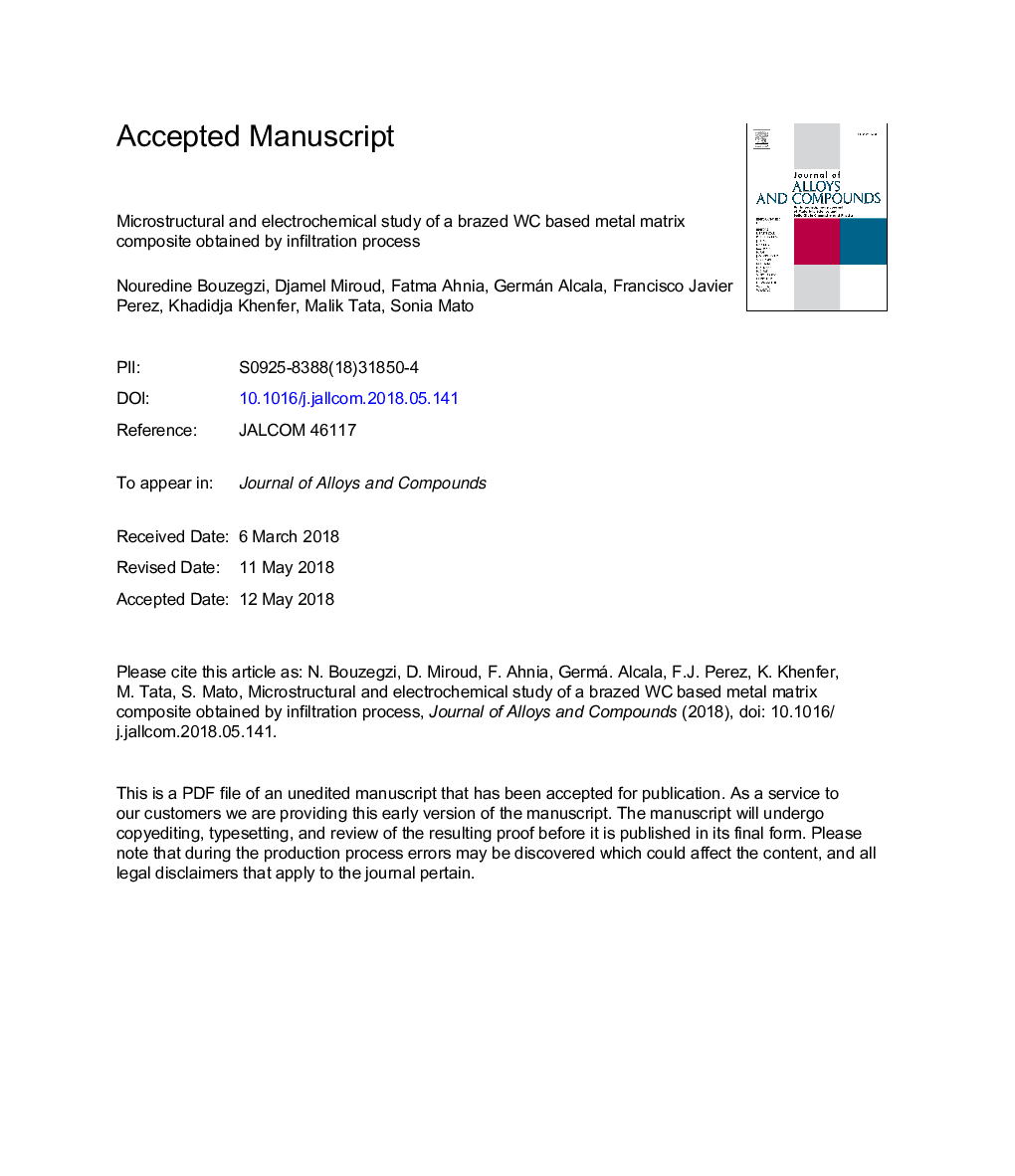| Article ID | Journal | Published Year | Pages | File Type |
|---|---|---|---|---|
| 7991058 | Journal of Alloys and Compounds | 2018 | 29 Pages |
Abstract
In the present work, a metal matrix composite (MMC) was produced by the infiltration of a Ni-based bronze (74.4â¯wt.% Cu. 15.8â¯wt.% Sn, 3.8â¯wt.% Mn and 5.5â¯wt.% Ni) into a mixture of WC/W2C, Cu and Mn powder. The obtained piece was subsequently assembled to the WC-Co cermet of a polycrystalline diamond compact (PDC) insert. The joint was performed by oxyacetylene brazing process using an Ag based alloy (49â¯wt.% Ag, 23â¯wt.% Zn, 16â¯wt.% Cu 7.5â¯wt.% Mn, 4.5â¯wt.% Ni) as the brazing filler metal (BFM). The microstructure of the resulting system was studied by means of Scanning Electron Microscopy and X-Ray diffraction. Of special interest is the MMC and MMC/BFM interface, where the formation of an inter-diffusion zone is observed with the presence of new phases such as, AgMn19, Mn-Zn and Cu-Zn, that enhanced the bonding of the MMC to the WC-Co cermet. Additionally, the electrochemical behavior of the interface was studied in 0.5â¯M NaOH solution, followed by the analysis of the electrolytes by Inductively Coupled Plasma Atomic Emission Spectrometry. The results highlight an uneven dissolution of the constituent phases at the MMC/BFM interface due to localized corrosion processes and galvanic interactions occurring between phases of different composition.
Related Topics
Physical Sciences and Engineering
Materials Science
Metals and Alloys
Authors
Nouredine Bouzegzi, Djamel Miroud, Fatma Ahnia, Germán Alcala, Francisco Javier Perez, Khadidja Khenfer, Malik Tata, Sonia Mato,
